Gap Filling a Horse Hoof
Watch the video for Ray’s homemade treatment for gap filling a horse hoof. Materials required – sugar and iodine. https://fb.watch/9W8C_OXvhx/
Continue ReadingREMEDIAL HORSE MASSAGE
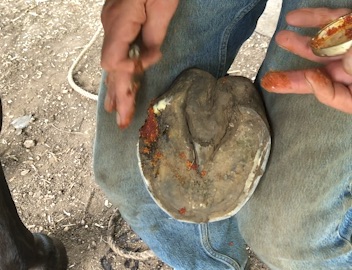
Watch the video for Ray’s homemade treatment for gap filling a horse hoof. Materials required – sugar and iodine. https://fb.watch/9W8C_OXvhx/
Continue Reading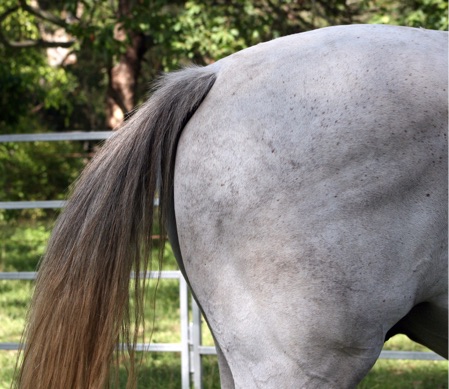
Horses get their power from the back-end. So when a horse has a sore back there will, 99 times out of a 100, be some muscle tension/stress in the horses hindquarters which are the gluteal muscles, the hamstrings and all the connective tissue (fascia) involved. The section between the hip and thigh bones, a big […]
Continue Reading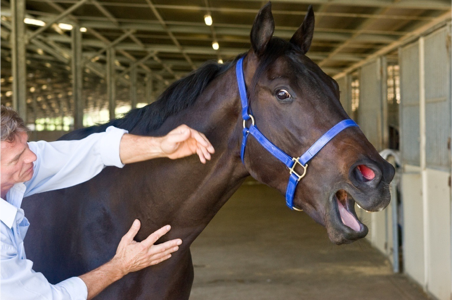
The horse yawning is a good indicator of a state of relaxation. Here I use the side of my hand like a sliding effluerage/friction. You too can create your own techniques – it’s all about contact and keeping the horse happy. Horses are very sensitive to touch. They respond to a gentle muscle release with […]
Continue Reading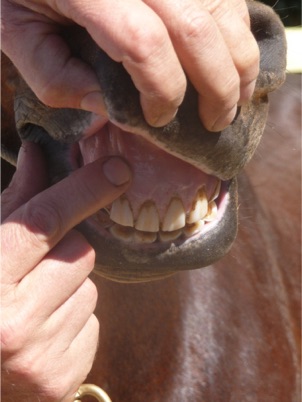
The ‘gums’ of the horse are a good point to take into account as far as an indicator of health and general condition. The gums of the horse are where we can do a blood circulation test by putting pressure on the gum for a minute, then removing the finger and waiting to see how […]
Continue Reading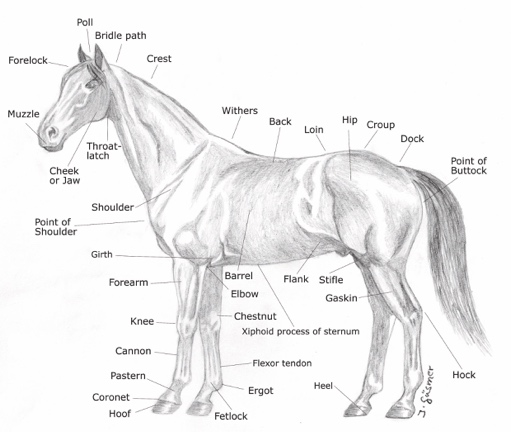
We need a good knowledge of the points of the horse so we know what anatomical region we are talking about. It is all about discussing some of the health issues of the horse. Belly….this is located behind the last rib, the lower region before we get to the flank. Back….the back is the area […]
Continue Reading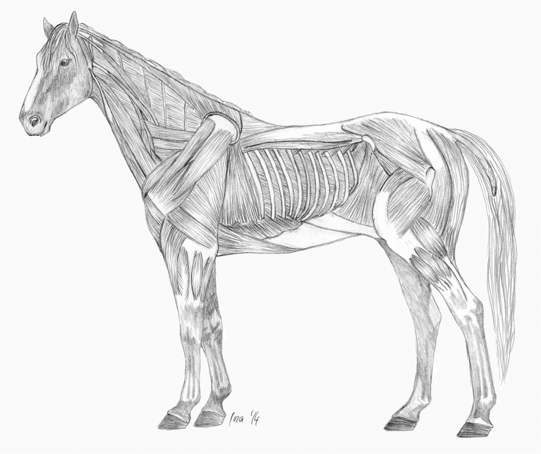
Muscle origin – the attachment of a muscle tendon to a stationery bone. Muscle insertion – the attachment of the other tendon to the moveable bone. Muscle belly – the fleshy (middle) portion of the muscle between the tendons of the origin and insertion. Muscle contraction – shortening of the muscle. Muscle release – to […]
Continue ReadingMuscle Types There are three types of muscle in the horse’s body: SKELETAL muscles are the ones we are mainly concerned with because they are attached to the limbs and have everything to do with movement of any type. Skeletal muscles are controlled by the brain and nervous system. The skeleton is the framework for […]
Continue Reading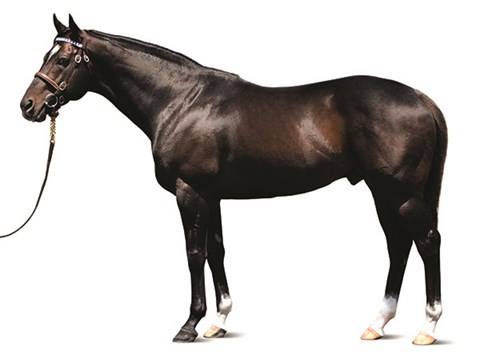
It’s good practice to evaluate a horse’s health by the condition of its coat or skin The coat or skin (including the hair) is a protective layer over the horse’s body. The skin is tough and elastic and capable of withstanding knocks and bumps without damage. When a horse looks good in the coat then […]
Continue Reading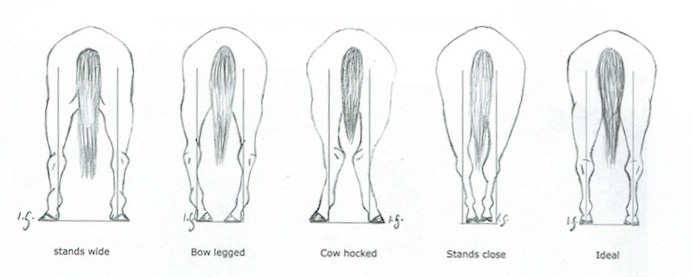
Horse conformational defects may be acquired from a build-up of muscle restriction. Many times I have seen a horse’s rear leg turned in or out from a hip joint problem. These conformations defects will be made up from a combination of tight gluteals and fascia constriction, tight hamstrings pulling on the pelvic girdle and […]
Continue Reading
Horses can not tell us when they are in pain. As horse owners we have to be observing our animals everyday to look out for signs of trouble. There are hundreds of problems that can cause a horse pain. Watching out for these symptoms will help you get on top of issues quickly and with […]
Continue Reading